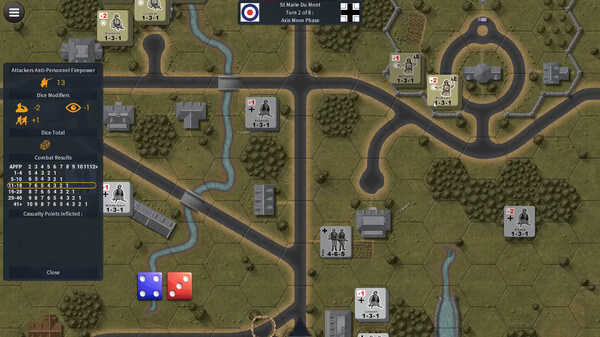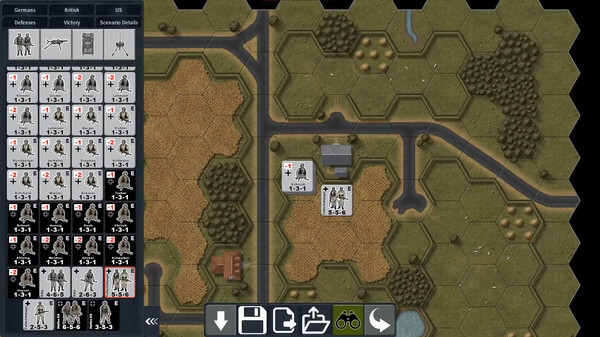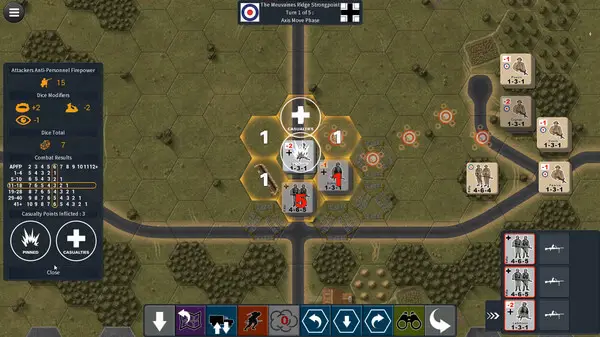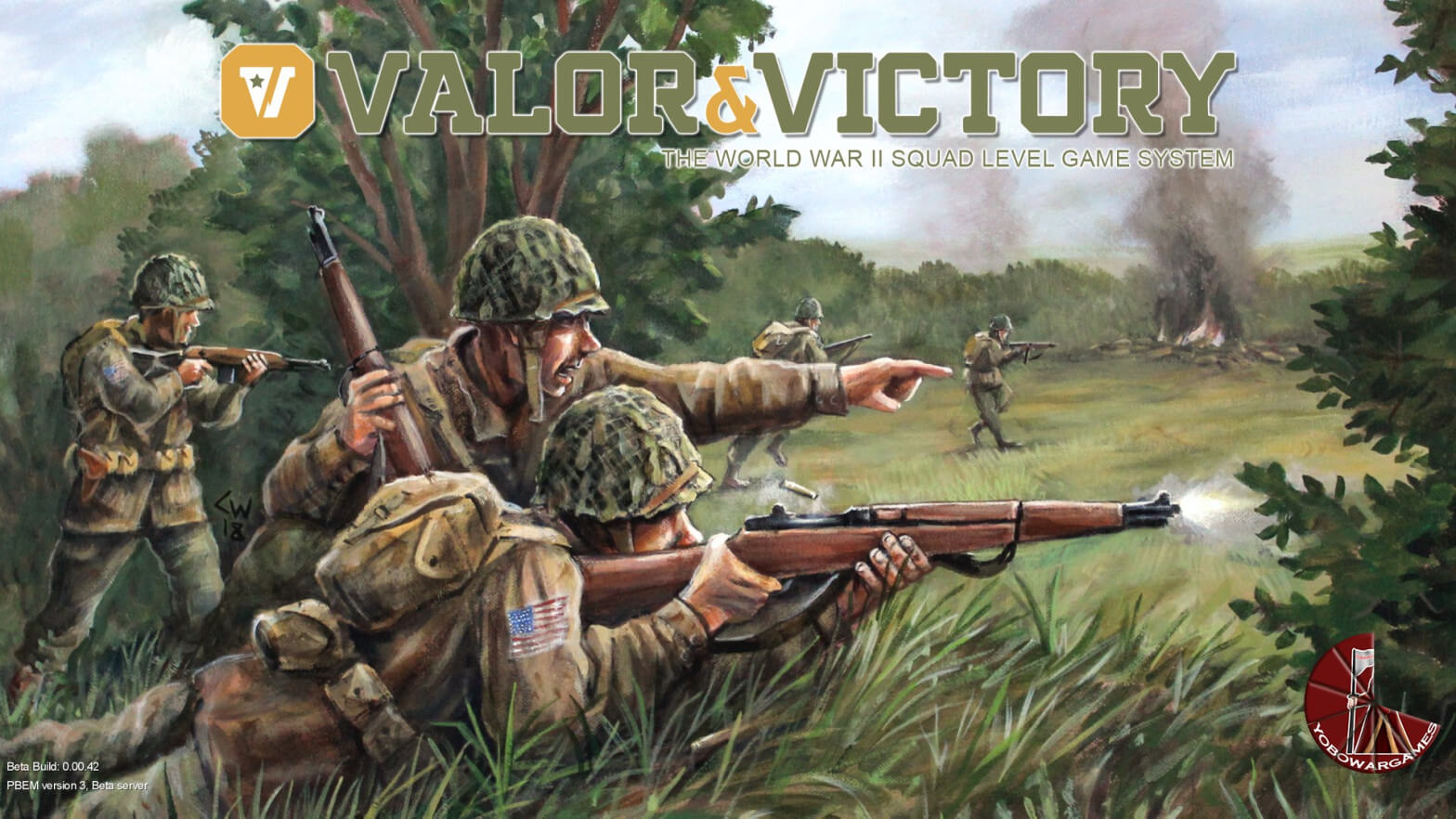Board games, you remember those right? Being sat around a table with your friends, a nice bowl of snacks and drinks at the ready, enjoying each other’s company while you roll dice, draw cards and win the day, all the while sharing jokes and puns. With lockdown set to end sooner rather than later, we’ll all be back to board games soon enough which will be great. But sometimes you want to play a board game but don’t have access to friends or table space. This is where a nice conversion of the game can come in handy!
WW2 board game Valor and Victory now have a new conversion by Slitherine games which means you can play V&V without needing a table, dice, or even an opponent as the AI can fill in for your missing friend/opponent.

I must plead ignorance regarding the board game itself, having never played it. Its article on Boardgamegeek says that it was originally self-published back in 2007 and offers a “fast-playing, squad-level WW2 game”. The conversion has come somewhat out of left field as there are plenty of good WW2 games and even quite a few good squad-level ones too. So, what do Valor and Victory offer?
Set in the Normandy campaign, there are nineteen scenarios featuring the Americans or the British facing off against the Germans. Valor and Victory is a small-scale game, with at most a company or so worth of soldiers and vehicles on each side. You’ll command squads which can be broken down into half squads and individual leaders and vehicles, though don’t expect “hero-hammer” here, leaders are not super-human and can’t win battles all on their own.
V&V is played out on a hex map, with units represented by counters complete with their statistics and illustrations so the game is literally a digital representation of the board game, complete with virtual dice being thrown and a reference to the combat resolution table, though the computer will tell you what the results are so you won’t need to have the rulebook at the ready.
Graphically, V&V is fine with clear graphics with counters and markers nicely represented though without much panache. Units and terrain are always easy to recognize and whilst the very literal translation of the board game may not appeal to everyone, the game doesn’t waste time with fancy graphics and 3d rendering.
The sound effects are also decent, with all the different weapons well represented with sound effects. The music is a bit loud on default and is fine, in a generic way. I just turned it off almost instantly. There aren’t any unit acknowledgements or other ambient noise which also adds to the games somewhat utilitarian style.
Each turn plays out in phases, with a command and control phase that gives you a chance to split or merge units, trade heavy weapons between squads and units will be rallied. You’ll then proceed to fire, which includes the use of smoke screens to provide protection to moving units then move. The enemy then gets a defensive fire phase, giving them a chance to pour down some opportunity fire at you.

The final phase is an Advance phase which gives you a chance to move your units on one hex, which can include close assaults, which can sometimes be the only way to clear out a stubborn enemy in hard cover.
Weapons fire in V&V can be quite weak, with units in hard cover very difficult to kill with small arms, which is probably fair. Meanwhile, units moving in the open can suffer casualties, be pinned down or even wiped out if they cross too many lines of fire. The deadly German MG42 can wipe out a whole squad if they get caught in the open.
Armour, which is fairly rare in the scenarios, is obviously hardier but can still be ambushed by anti-tank weapons or even plucky infantry. Armour also has more rules regarding facing and can take damage rather than suffering casualties but as it stands, V&V is more about the battle between infantry than an armoured warfare simulation.
V&V has a tutorial which is functional but at times fails to explain some very simple things. The unit scores on the counters, for example, is not explained in the tutorial and you’ll need to look them up in the game’s manual. There’s not much to learn so V&V doesn’t need a deep tutorial but the one presented doesn’t really do enough to explain the game, or the why and how of how you play it.
There’s also no campaign mode at all, just a series of scenarios to play out. There’s a robust scenario editor to allow you to create new scenarios and I’d expect that if the game does well, it’ll get a few DLC to allow new scenarios, new units and new rules to come into the game.

As it stands, V&V feels a bit bare bones and whilst the AI offers a competent opponent, the game is far more fun played against another human. There’s a hotseat mode and also the option to use Slitherine’s PBEM mode, though this always feels a bit clunky to me.









